Flight to AntarcticaFlights to the Ross Sea region of Antarctica begin in Christchurch and are shared between the American and New Zealand Antarctic programmes. The flight path crosses the northern coast of Antarctica in Oates Land, an area named after one of the members of Captain Scott’s ill-fated polar journey in 1911-1912. We then fly south over highland icefields, diagonally across northern Victoria Land and the western Ross Sea. Finally, we make a slow descent past Ross Island (with its famous volcano of Mount Erebus) to land on the sea ice adjacent to the US station of McMurdo. The journey reveals a wide range of glaciological phenomena, including sea ice, ice streams, glacier tongues, land-terminating glaciers, as well as a couple of volcanoes. During this flight on 12 November 2010, we were able to take photographs from the cockpit of an Airbus 310. Some photos are in black and white because of colour problems resulting from optical effects of the cockpit window. |
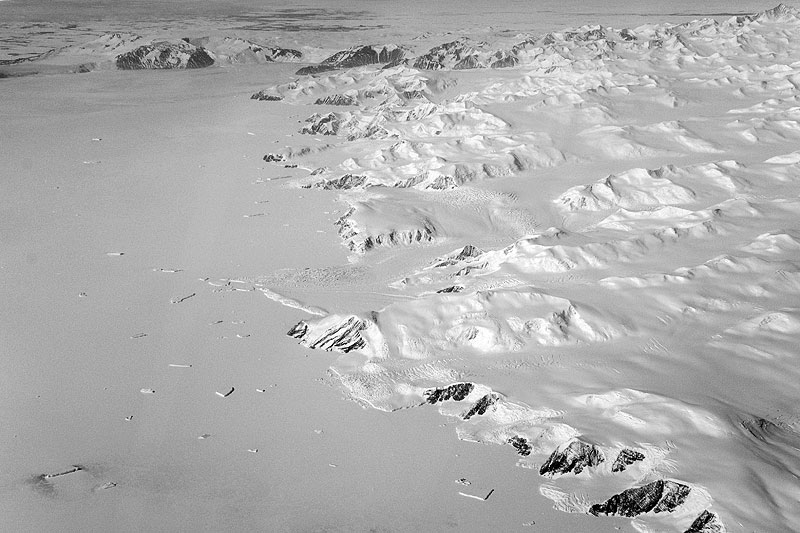 Approaching the continent, we look at the ice-bound coastline of Oates Land. The smooth snow-covered surface to the left is sea ice, whilst the land area is represented by uneven glacier-covered terrain. | 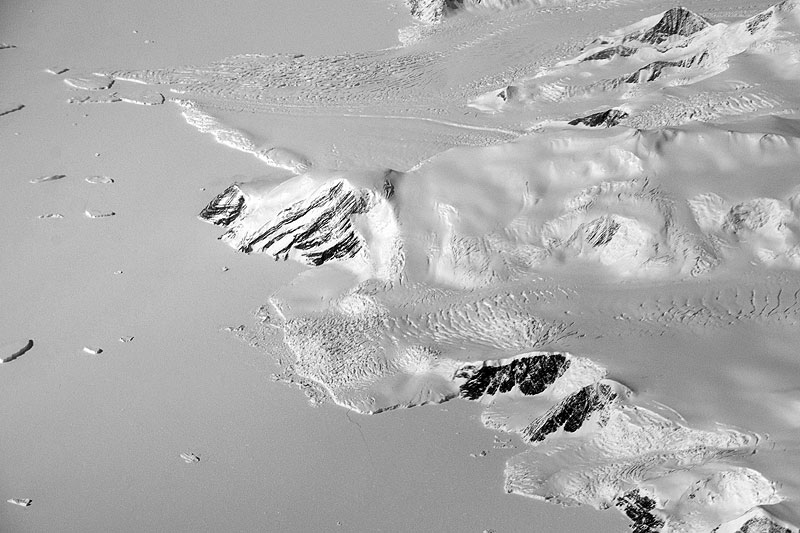 Zooming in on the coast of Oates Land below we see two heavily crevassed ice streams with floating termini. | 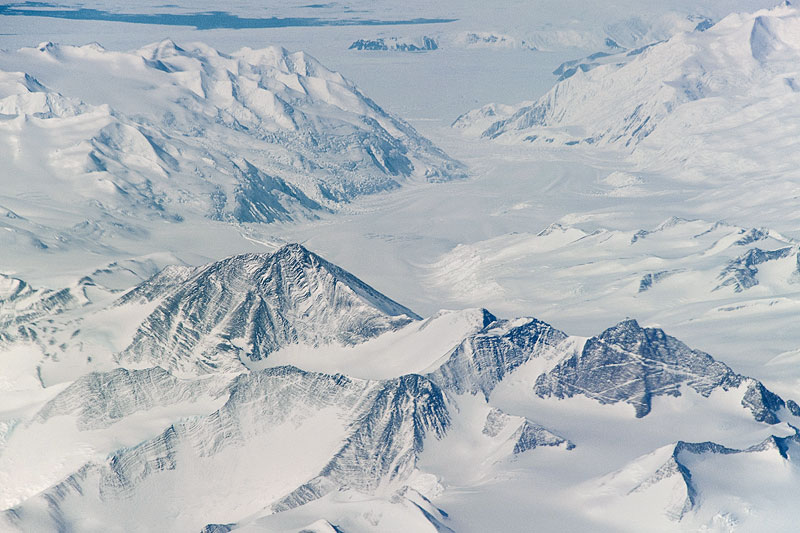 The interior of Oates Land is characterised by a highland icefield where mountains in excess of 4000 m protrude above the thick ice cover as nunataks. These mountains show folded rocks that are a manifestation of the Early Palaeozoic Ross Orogeny. | 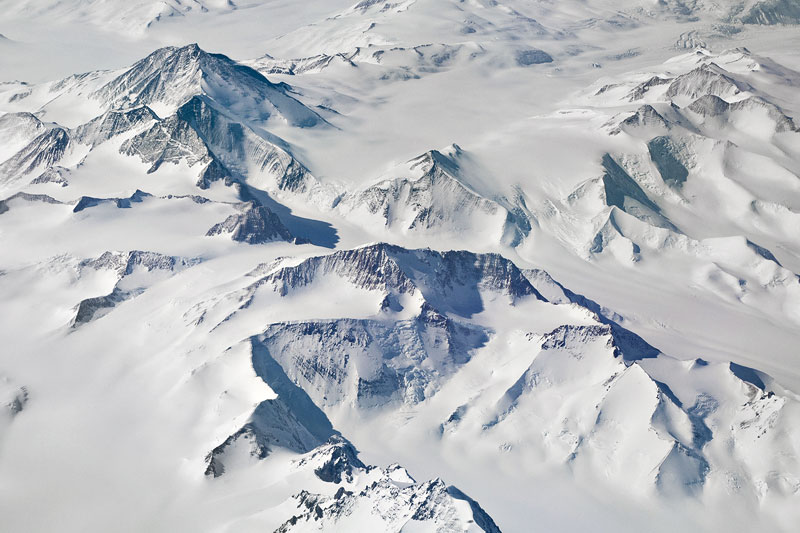 Another view of the Oates Land highland icefield. The main East Antarctic Ice Sheet lies to the west of these mountains, behind the camera position. |
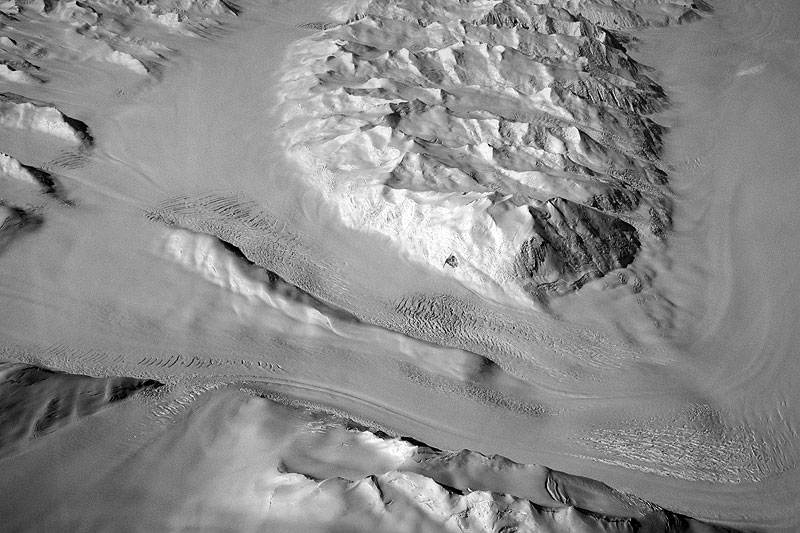 Ice-flow in this region of northern Victoria Land is complex, demonstrating what is known as ‘selective linear erosion’ where ice flow is controlled by bedrock structure. Here, glaciers are flowing in different directions and combining. | 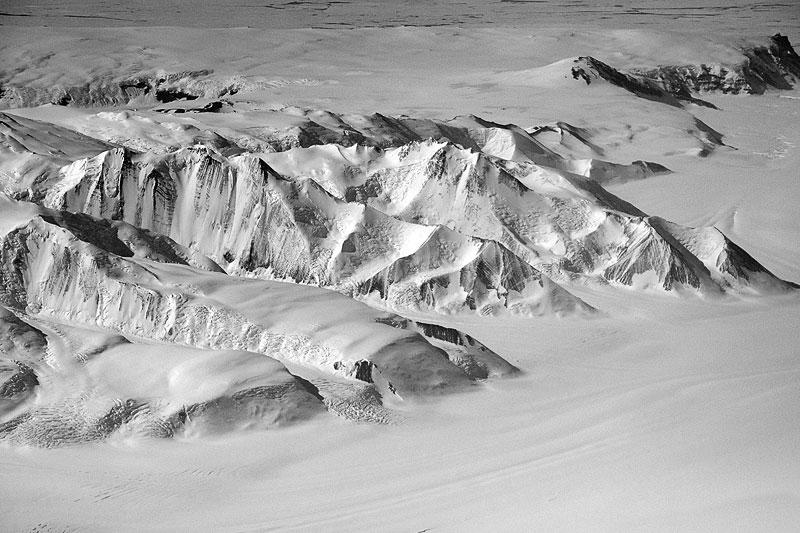 Glacial erosion has produced a predominantly alpine topography in this region of northern Victoria Land, but a few smooth remnants of topography that has not been eroded still survive. | 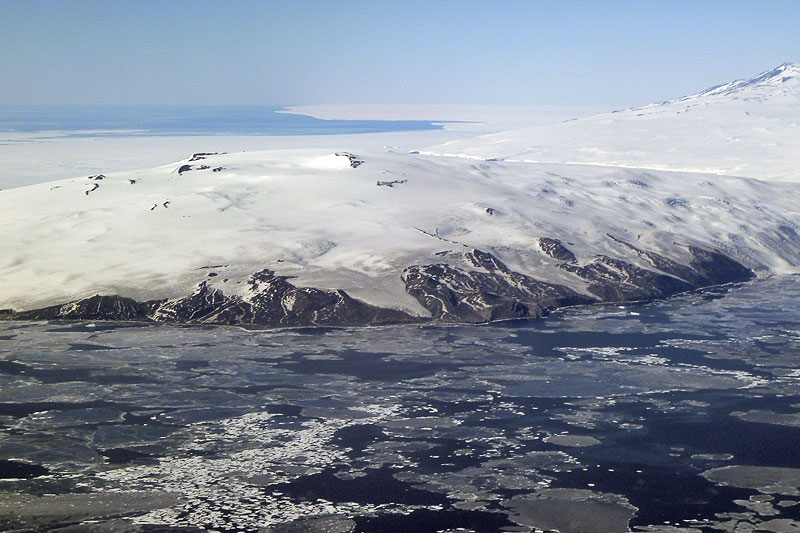 This view of Mount Bird, looking east, reveals its thin ice cap and outlet glaciers, not all of which reach the sea. In the background is the frontal cliff of the Ross Ice Shelf, the world’s largest floating body of glacier ice that is the size of France. | 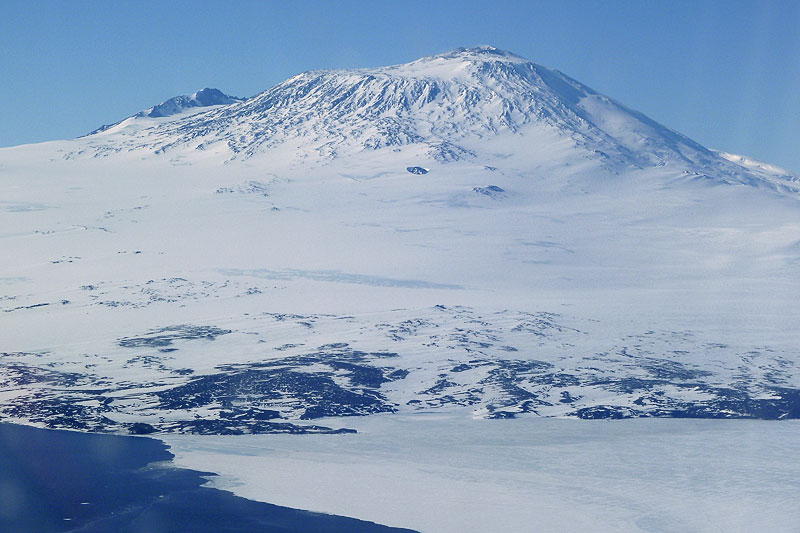 Mount Erebus, with an ice-free area at its foot. The peninsula is Cape Royds, and it is here that Shackleton’s 1908 hut is located. Just to the left of the Cape is the fast-ice edge. |
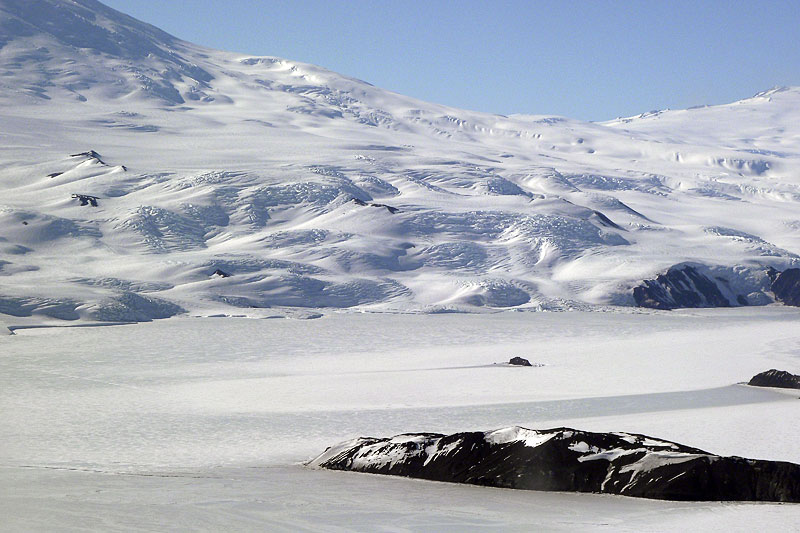 The crevasse-ridden slopes of Mount Erebus form a backdrop to Inaccessible Island foreground, and the Little and Big Razorback Islands beyond. | 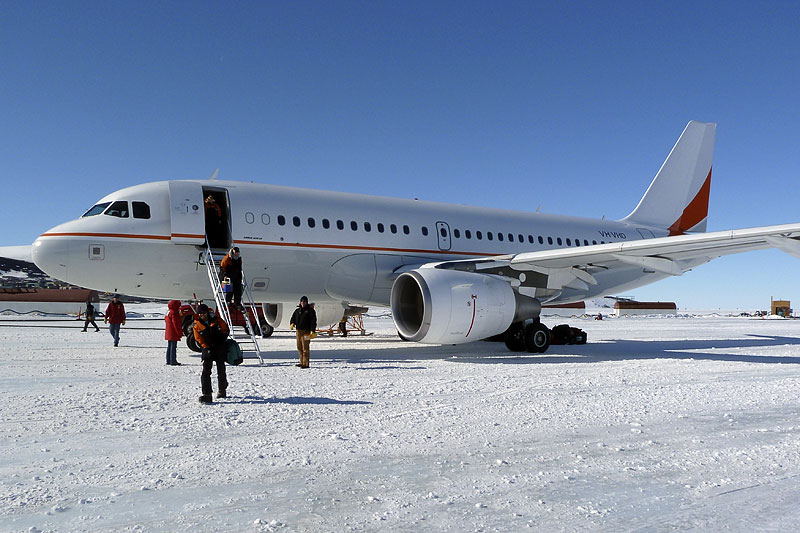 Disembarkation from our passenger aircraft, an Airbus 310, at the McMurdo sea-ice runway. Normal transport to and from Antarctica is in much less comfortable military aircraft than this. | 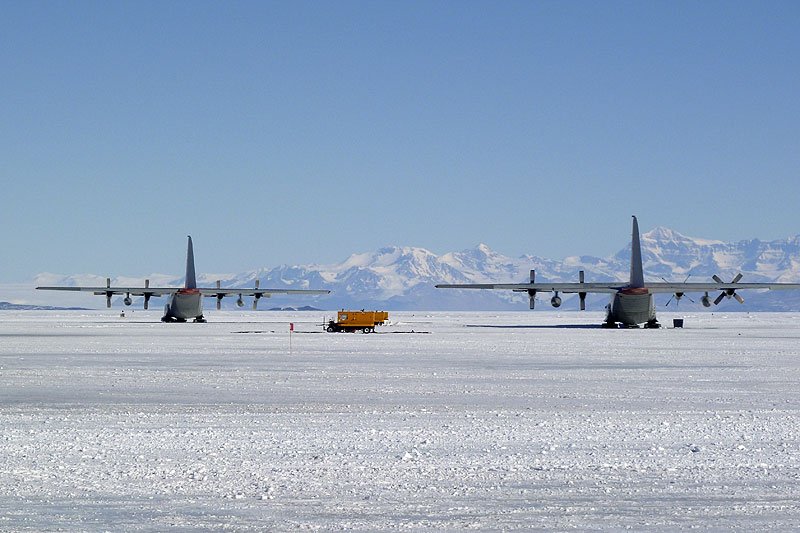 Two C130 (Hercules) aircraft parked on the sea-ice runway at McMurdo. These aircraft are used for flights to the US Scott-Amundsen Station at the South Pole and, occasionally, on the flights to and from New Zealand. | |
| Photos Michael Hambrey, November and December 2010. |